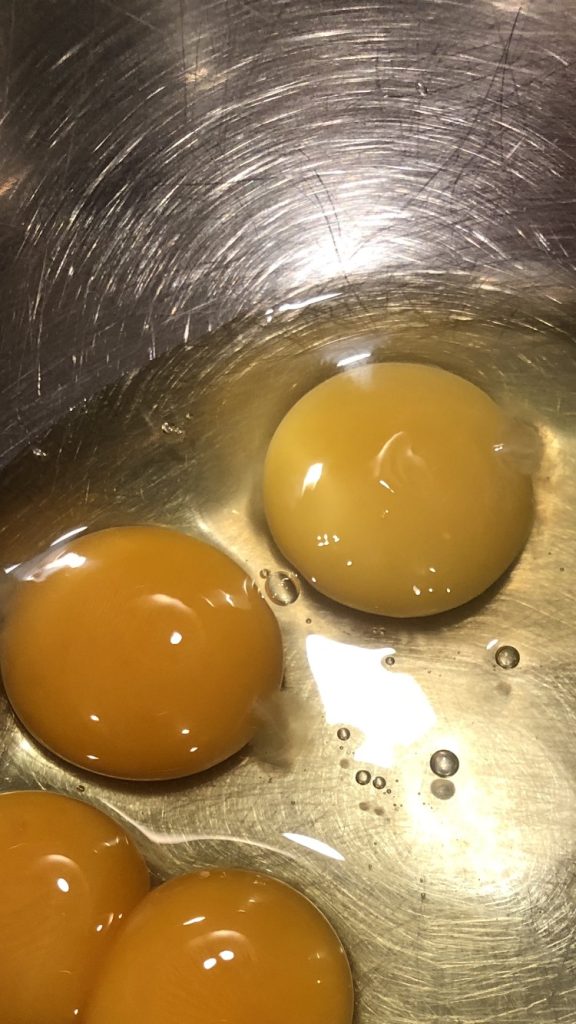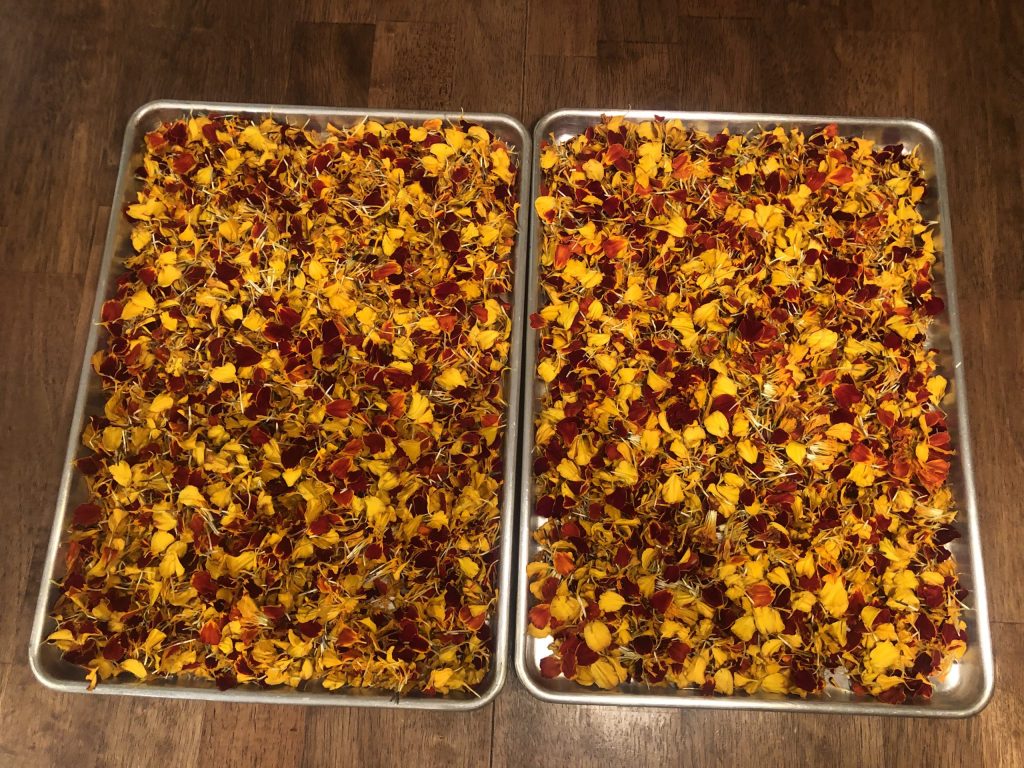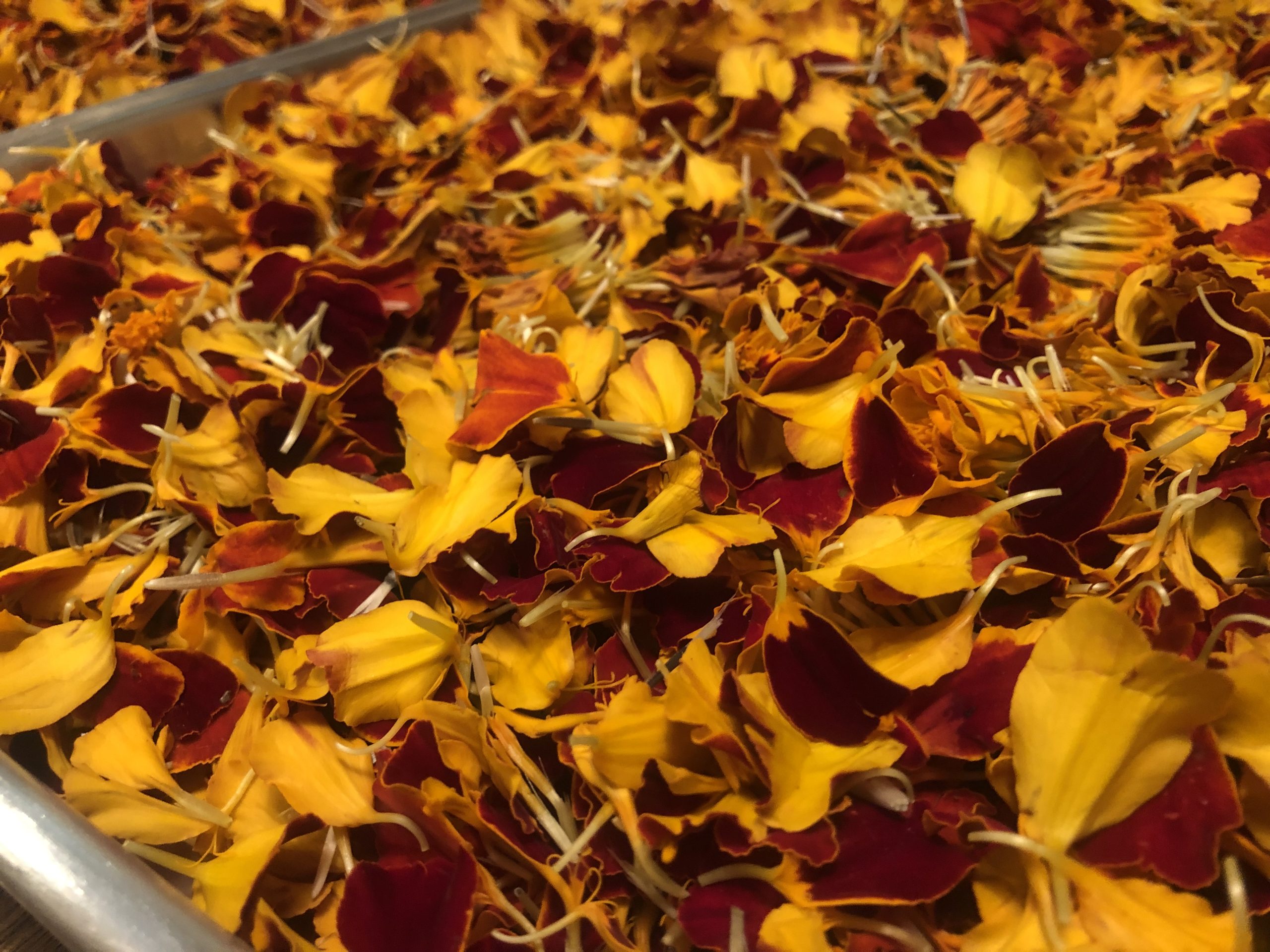If you were to take a home-grown egg and a typical grocery store (factory farmed) egg, crack them, and compare them, the most obvious difference would be the yolks. While factory farmed egg yolks are pale yellow, most home-grown egg yolks are dark yellow, even orange.

The reasoning behind this lays in their diet. Chickens that are fed a wheat based diet will lay pale yellow yolks, while hens that are fed a corn or alfalfa based diet will lay a bit darker egg yolk.
Factory hens may have a bit of variation in their egg yolk color, but in my experience, they typically do not have the deep orangey color.
Hens raised at home as free range or a truly free-range egg producer (the legal definition of ‘free range’ is vague and not the picturesque farm life most would imagine) will often have very deep colored yolks. This is because while free ranging, chickens get to forage to their heart’s content and eat a variety of deep colored vegetation, seeds, bugs, and even the occasional frog or lizard depending on where they live! All of this forage boosts their carotenoid intake; carotenoids are pigments naturally occurring in plants, bacteria, and algae that give a deep hue to them, and also provide health benefits when eaten.
For a homesteader who doesn’t have a lot of property or vegetation, or perhaps needs to keep chickens enclosed in a run, it can be challenging to get the chickens enough carotenoids to achieve those dark yolks. There are a few ways to help boost their intake you can try.
- If you are able to do so, allow chickens to forage even a little bit each day. The easiest way to achieve this is to let them out of their run about 30 minutes – 1 hour before dark. I often use this method because if I leave them out all day, the chances of a hawk attack in our area increase significantly. Also – the average human can run around 8 miles per hour, but chickens can run 9 miles per hour… and fly just long enough to get out of your reach so catching them is not usually a feasible option.
- This one comes with a big qualifier – IF you know that the weeds in your garden, flower beds, sidewalk, etc. have NOT been treated with an herbicide, pesticide, or other undesirable application, then you can utilize those! Dandelions especially are a great source of beta carotene. I love to go on a weeding spree (and let’s face it, it’s easy to get behind and have to catch up!), then dump several buckets of those weeds in my chicken run for them to excitedly dig through! It’s important to make sure they have plenty of insoluble grit/small gravel available to help them digest this material so it gets properly ground up before heading to their stomachs.
- Save your unsweetened/unsalted veggie and fruit scraps to toss to the chickens. We keep a ‘chicky bucket’ as my littles like to call it next to the kitchen sink for this purpose. It’s important to note that you should NOT toss the moldy bits to them as this can cause sour crop and other ailments. *****Do NOT give chickens avocado skins or seeds, these are poisonous to them.*****
- Call up your local grocery store to see if they are open to giving away older produce that would otherwise be thrown away. Again, not moldy, but sometimes produce gets bruised or oxidized and they are unable to sell it. Sometimes these things are simply disposed of with nothing else to do with them. However, if management allows, you could do a pickup of things that would otherwise end up in a landfill.
- Grow a chicken garden! Many things that we would grow in our vegetable or flower gardens are safe for chickens to eat – and if you’ve ever seen one free ranging, you’d see that they will happily devour your prized rose bush as much as the weeds and bugs. My favorites to grow for my chickens are lettuce/kale, squash, and marigolds! This past year I grew a plethora of marigolds and harvested the petals for the chickens. To preserve the marigold petals I laid them in a single layer on baking sheets and slowly dried them in the oven at a low temperature. I couldn’t get over how beautiful they were!


